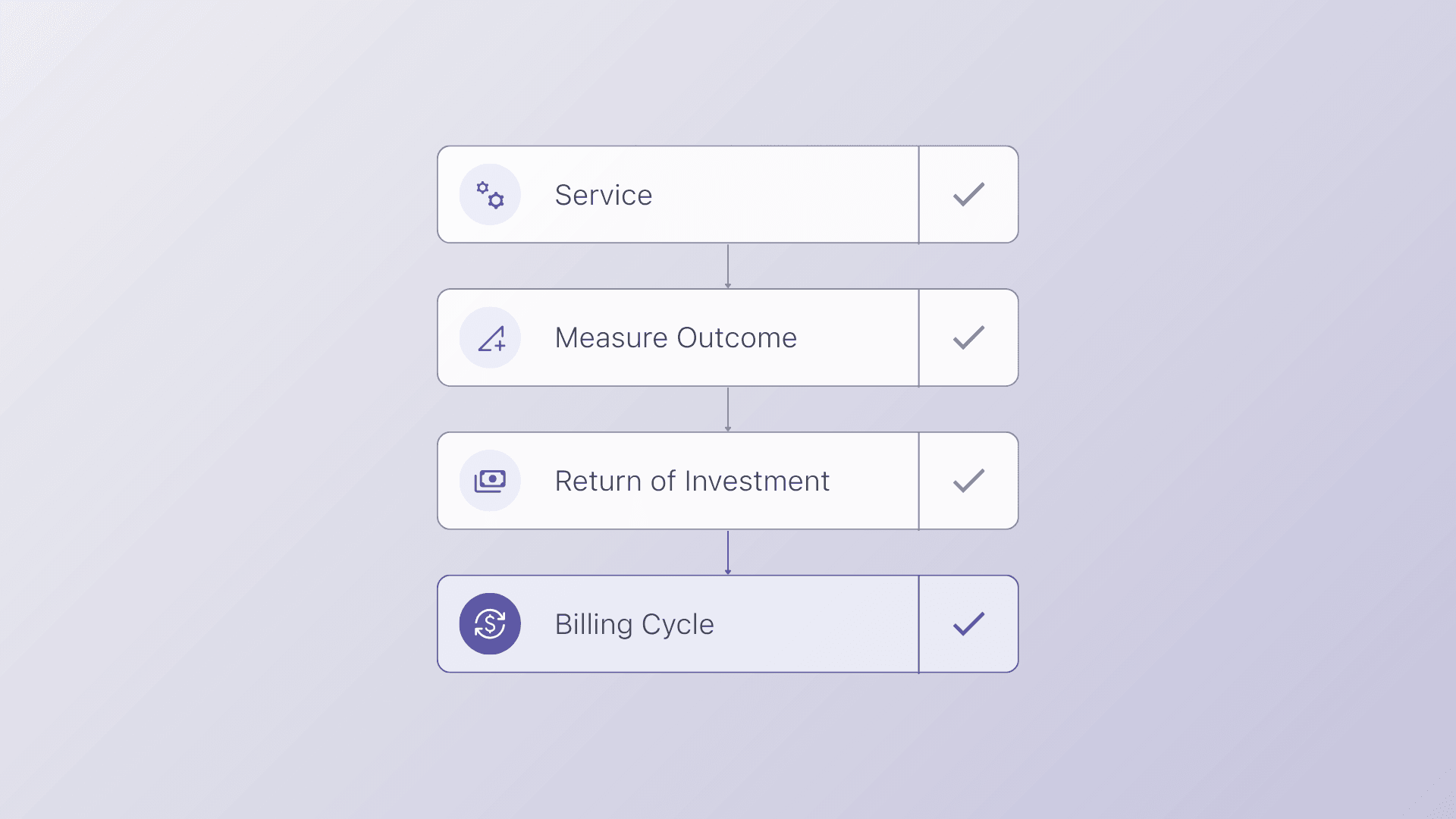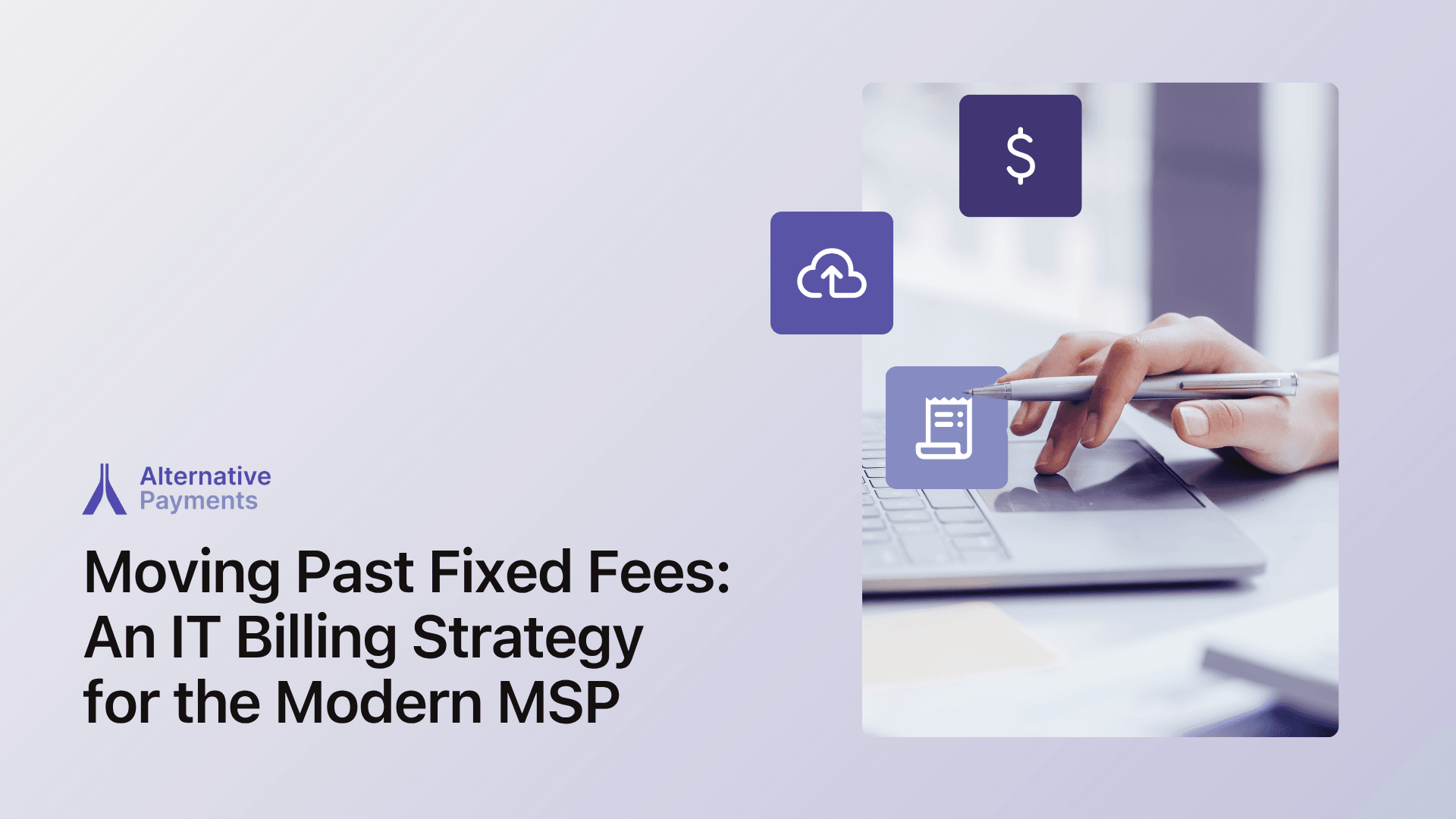IT Billing defines how Managed Service Providers measure, capture, and sustain profit, yet most are still operating like it’s 2015. For years, the fixed-fee model made sense: clients wanted simplicity, and MSPs wanted predictability. But that simplicity now hides a slow erosion of margins.
As MSPs have grown into strategic partners managing complex cloud ecosystems, hybrid networks, and cybersecurity infrastructure, the traditional flat-rate approach has failed to keep pace. The data backs it up, according to ConnectWise’s MSP Benchmark Report 2025, nearly two-thirds of providers admit their pricing no longer reflects service value.
This gap between service delivery and billing accuracy is now one of the biggest threats to MSP profitability. To stay competitive, MSPs must adopt flexible, data-driven billing strategies that scale with client demand, automate reconciliation, and reward measurable outcomes.
In this guide, we’ll explore the three dominant alternatives to fixed fees, per-user, tiered, and value-based pricing, and the infrastructure you’ll need to modernize your financial operations.
The Problem with Fixed-Fee Billing Models
Fixed fees once represented stability. MSPs could forecast revenue easily, and clients enjoyed a clear monthly invoice. But in today’s dynamic service environment, that same predictability becomes a constraint.
A Kaseya Global MSP Report (2025) found that 78 percent of providers have seen margin compression over the past two years, primarily from static contracts that don’t scale with client complexity. Rising software-licensing costs, inflation, and security labor shortages make fixed pricing unsustainable.
The hidden danger is service creep, when the scope of work expands but pricing doesn’t. What begins as a profitable contract quickly turns into a cost center as technicians spend untracked hours resolving advanced security incidents or onboarding new endpoints that aren’t reflected in invoices.
Clients, meanwhile, grow accustomed to “all-you-can-eat” support. The result: higher workload, shrinking margins, and no financial incentive for efficiency.
To regain control, MSPs must evolve IT Billing from static invoicing to dynamic, usage-aware billing that scales with delivered value.
The Modern MSP Landscape: Why Flexibility Wins
The MSP model has evolved from device management to business enablement. Today’s providers deliver cybersecurity, compliance, automation, and cloud strategy, all of which demand adaptable billing frameworks.
Gartner’s IT Services Forecast 2024 predicts that 70 percent of MSPs will move to hybrid or performance-based billing models by 2026. Why? Because flexible billing aligns with the modern buyer’s mindset. Clients no longer judge value by the number of tickets closed; they measure it by uptime, protection, and ROI.
Flexible billing offers three major advantages:
- Financial agility: revenue grows with client scale instead of staying fixed.
- Transparency: pricing reflects actual service impact.
- Trust: clients see fairness in cost alignment, leading to stronger renewals.
For MSPs, flexibility isn’t a pricing experiment, it’s a survival strategy. The firms adapting their billing to real-world performance are the ones achieving higher valuation multiples and client satisfaction scores.
Per-User Billing: Predictability Meets Scale
Per-user billing is the logical first step for MSPs transitioning from flat-rate contracts. It’s familiar to clients and easy to automate. By tying revenue directly to headcount, this model balances predictability with scalability.
Why It Works
- Revenue grows automatically as clients add users.
- Forecasting is straightforward for both sides, CFOs love clear seat-based costs.
- Billing aligns with consumption, preventing over- or under-charging.
What It Requires
To maintain accuracy, systems must talk to each other. Integrating your PSA (Professional Services Automation) tool, such as ConnectWise Manage or HaloPSA, with billing automation platforms like Alternative Payments ensures real-time synchronization between service usage, invoicing, and accounting.
When implemented correctly, per-user billing can increase transparency and reclaim lost revenue. It’s the bridge model that modernizes IT Billing without disrupting long-term client relationships, paving the way for more advanced value-based structures.
ng to which package, and how upgrades affect monthly recurring revenue. With the right integration, tiered billing becomes effortless, and highly profitable.
A 2025 Datto MSP Economics Study found that MSPs who adopted tiered billing saw average gross margin increases of 18 percent within the first year. Higher-tier clients account for 70 percent of revenue but less than 40 percent of service tickets, proof that aligning price with service depth drives profitability, not workload.
Behind the scenes, managing multiple tiers means maintaining accurate service catalogs, automated renewals, and synchronized PSA data. Without automation, the administrative overhead can cancel out gains. Modern billing platforms now auto-assign pricing tiers and synchronize them with accounting ledgers, cutting manual reconciliation by up to 60 percent.
Tiered pricing also leverages anchoring psychology, when clients compare options, they naturally gravitate toward mid- or higher-tier plans. According to HubSpot’s 2024 Pricing Psychology Report, well-structured tiers can raise average contract value by 15–25 percent without increasing churn.
For instance, a Midwest-based MSP migrated its clients to a three-tier model within six months. Using automation to track tier usage, the firm improved margin per client by 22 percent and reduced billing disputes to almost zero. The key? Transparent communication and a dashboard that visually displayed tier benefits to clients.
As services become more AI-driven, MSPs will likely expand beyond three tiers to dynamic “performance-based” tiers that adjust automatically based on SLA metrics or usage, combining the best of tiered and value-based billing.
Value-Based Billing: Profit from Outcomes, Not Hours
While per-user and tiered models offer predictability, value-based billing maximizes profitability. It charges clients for measurable outcomes, such as uptime guarantees, risk reduction, or productivity gains, not for labor hours.
A Deloitte 2024 Pricing Study reported that companies using value-based billing achieve 25–40 percent higher margins than those with hourly or fixed-fee models. For MSPs, this shift requires strong analytics to prove ROI.
Here’s how it works:
- Define measurable success metrics (e.g., downtime reduction).
- Track performance through dashboards integrated with your PSA.
- Align invoices directly with achieved results.
This structure positions your MSP as a strategic business partner, not a vendor. When clients see a clear financial impact, they’re far less likely to churn, and far more likely to expand services.

Infrastructure for Modern IT Billing
Behind every successful billing transformation is a connected system stack. MSPs moving beyond fixed fees need three critical layers:
- PSA Integration: Tools like ConnectWise Manage or HaloPSA track usage and contracts in real time.
- Billing Automation: Platforms such as Alternative Payments or Stripe sync invoices, apply payment automation, and reconcile transactions automatically.
- Accounting Sync: QuickBooks Online, Xero, or NetSuite connect revenue data to the general ledger, ensuring accuracy and compliance.
The ROI is measurable. MSP Alliance research (2024) shows that automated billing reduces reconciliation time by up to 60 percent and increases net margin by 8–12 percent annually.
When these systems work together, billing becomes an operational advantage, not a monthly chore.
Transitioning from Fixed to Flexible Models
Modernizing your IT Billing strategy doesn’t happen overnight. The transition must be strategic and data-driven.
Step 1, Audit Profitability: Identify which contracts are losing margin and why.
Step 2, Segment Clients: Separate clients who value stability (start with per-user) from those ready for value-based outcomes.
Step 3, Pilot and Automate: Introduce the new model to a limited group and automate tracking in your PSA.
Step 4, Communicate Clearly: Use ROI language, not price hikes. Explain how transparency and automation improve fairness.
Case studies from MSP Alliance highlight that when clients understand how billing aligns with business results, renewal rates rise by 20 percent or more within the first year.
The key is patience: start small, measure success, then scale.
Billing as a Growth Strategy
Modern IT Billing isn’t about invoices, it’s about intelligence. MSPs that adapt their pricing to reflect service value move from reactive collections to proactive growth management.
Fixed-fee billing served a simpler era. Today, automation, analytics, and flexible models define profitability. The MSPs who modernize will lead with transparency, scalability, and trust.
Next Steps:
- Audit your existing billing model for margin leaks.
- Integrate PSA, billing automation, and accounting.
- Pilot a flexible pricing model within 90 days.
When your billing reflects real client value, every invoice becomes proof of partnership, and a step toward higher enterprise valuation.

